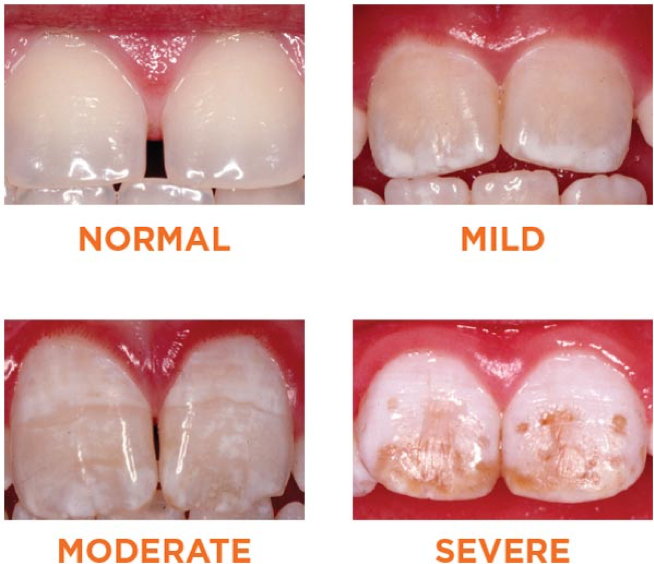Updated January 2021
Your child’s dentist just told you that your child has areas of enamel hypoplasia on their teeth. Here are answers to some of the questions you may not have thought to ask about enamel hypoplasia:
Q: What is enamel hypoplasia?
A: Enamel hypoplasia is a condition where teeth have less enamel (the outer, white part of the tooth) then they should. It can affect only a single tooth or multiple teeth, and it can range from looking like a small dent to affecting the entire size/shape of the teeth. The appearance could vary from a milky-white to a yellow or brownish color, often with a rough or mottled surface. It can occur with primary (baby) and permanent teeth.
Q: If my child has enamel hypoplasia on their baby teeth, will they also have it on their permanent teeth?
A: Primary and permanent teeth form at different times and so it is possible that whatever occurred causing enamel hypoplasia on your child’s baby teeth will not also be happening during development of their permanent teeth. Fortunately, even if your child does have enamel hypoplasia on their permanent teeth, as they become older and more cooperative, more options are available to treat these teeth.
Q: Other then the aesthetics of these teeth, why can teeth with enamel hypoplasia be a challenge?
A: Just like a shell protects the egg inside from harmful trauma, tooth enamel protects against thermal stimuli, allowing you to eat a bowl of cold ice cream without sensitivity, and physical stimuli, preventing your teeth from chipping when biting into hard candy/foods. Thus, teeth with enamel hypoplasia are more prone to cavities, excessive wear, and sensitivity then teeth without hypoplasia.
Q: What caused my child to have enamel hypoplasia on their teeth?
A: Primary and permanent teeth formation can be affected by:
- Infection/fever during pregnancy
- Premature birth/intubation
- Vitamin A, C, D deficiencies
- Malnourishment
- Hereditary disorders
- Some medications taken during pregnancy (Example: Tetracycline)
- Infections at birth causing a high fever (Examples: measles, chickenpox)
- Physical trauma to developing teeth
- Fluorosis
- Exposure to toxic chemicals at a young age
Q: How are teeth with enamel hypoplasia treated?
A: Treatment for teeth with enamel hypoplasia varies depending on severity. Mild cases can be managed with sealing/bonding, while more severe cases may require placement of full coverage crowns to protect from wear, sensitivity and/or cavities. In the most severe cases, extraction with replacement by a dental implant, bridge or a later erupting tooth might be the best treatment option.
Q: As a parent, what should my next step be?
A: Discuss the severity of enamel hypoplasia your child has with your child’s dentist. Fortunately, many cases of mild enamel hypoplasia can be managed with preventive care, including dental sealants and excellent oral hygiene. Treatment options are best determined on an individual basis between the dentist and the family.

